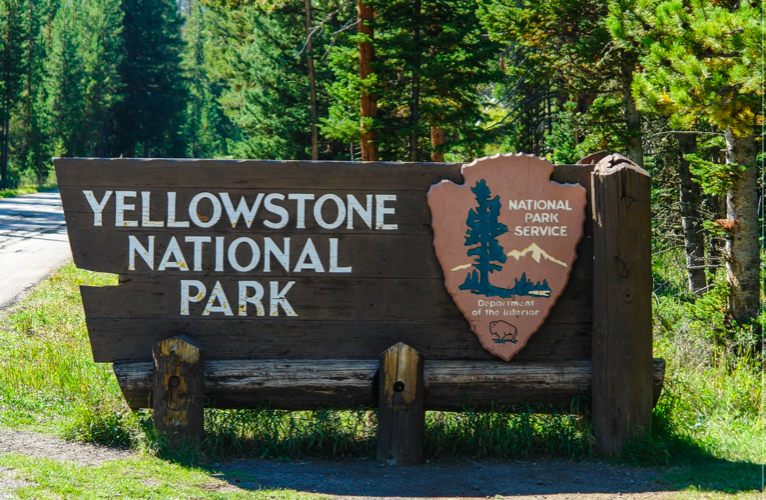After Biscuit Basin explosion, Yellowstone will look into tracking hydrothermal booms

JACKSON — Scientists aren’t sure whether it’s possible to detect hydrothermal explosions like last Tuesday’s Biscuit Basin blow-up before they happen. Still, they want to try and learn what they can about the subterranean blasts.
Yellowstone National Park Superintendent Cam Sholly is open to the idea.
“We definitely had what I’d call a close call. I’m very happy no one was injured or worse,” Sholly said. “We’ll continue to work with the scientists to figure out if there’s any better ways to improve monitoring. Obviously, we want to make sure that the public’s aware of any potential dangers as early as possible.”
Last Tuesday, in the hydrothermal system underneath the Black Diamond Pool, water quickly flashed to steam and escaped its earthen container, causing a blast that sent steam and black debris hundreds of feet skyward. As grapefruit-sized rocks rained down on Biscuit Basin, roughly 2 miles southwest of Old Faithful, a handful of visitors caught the explosion on camera, igniting a global, viral internet storm.
People have speculated, incorrectly, that the blast was caused by the Yellowstone Caldera, a gigantic volcano that lies dormant underneath the park, waking up and threatening humanity. A Casper-based satire blog started a rumor that the explosion turned up a well-preserved wooly mammoth (also false) and viral memes of living dinosaurs being blown out of the pool. (Again, nothing dead was resurrected.)
Biscuit Basin is closed for the rest of the season so Yellowstone can repair the boardwalk, Sholly said.
But well before the blast captured the attention of the internet, scientists with the park, universities and the Yellowstone Volcano Observatory were thinking about how they can better track hydrothermal explosions, which are fairly common in Yellowstone.
Before Tuesday, the most recent, known explosion happened in April at Norris Geyser Basin. The park was closed. That blast didn’t make national news.
In the past few decades, scientists have set up instruments to track earthquake activity, whether the ground is moving up or down, and chemistry in the park’s rivers. The goal is to understand whether the Yellowstone Caldera is acting up (it isn’t, they say) and predict any substantial changes, which are unlikely.
With the exception of modernizing those sensors, that higher-level work is done.
Now, scientists are turning their attention to the smaller geyser basins, where water closer to the surface causes geysers to erupt, and blasts like Tuesday’s are a somewhat common but unappreciated hazard.
While scientists want to study hydrothermal explosions, there’s no guarantee they can be predicted, said Michael Poland, scientist-in-charge of the Yellowstone Volcano Observatory.
“It’s entirely likely there are no actionable warning signs. Water flashes to steam very quickly,” Poland told the Jackson Hole Daily Friday. “And it may be that you only have a few seconds.”
Still, Poland and other scientists see value in studying geyser basins.
In September 2022, National Geographic Explorer and University of Wyoming professor Ken Sims, a volcano researcher, said monitoring smaller geysers’ basins is all about establishing a “baseline.”
“You can’t forecast that someone’s going to have a bad heart without understanding how the heart works and having EKGs and various blood tests to look for plaques,” Sims said.
Scientists have installed their first monitoring in Norris Geyser Basin, a network of technology that includes what Poland called an “infrasound array.”
In a nutshell, that device is three microphones in a triangle. The mics are capable of detecting low frequency sound waves that humans are incapable of hearing. But subterranean, geologic processes emit those waves and, when they hit the triangle of mics, they hit each mic at a different time, allowing researchers to determine exactly where they come from.
The technology in Norris, some 18 miles northeast of Tuesday’s blast, has allowed Poland and his colleagues to detect the Steamboat Geyser’s eruption, as well as the smaller hydrothermal explosion that happened this April. That has allowed them to better characterize the explosion. If more technology is installed and more blasts are characterized, the data can give scientists a better idea of how often they happen, how long they last, how big they are, and whether there are aftershocks or warning signs.
“Yellowstone is a big place and people are in a relatively few number of places for a few times a year,” Poland said. “No doubt this is the first time this has been captured on video like that. If we had more of this technology deployed in various places, we might be able to see things that were completely missed.”
This story was published on July 29, 2024.








